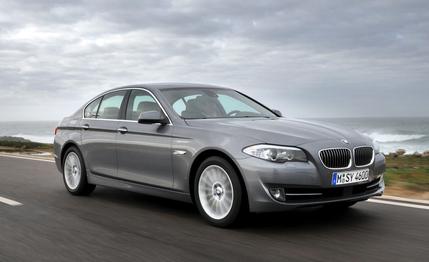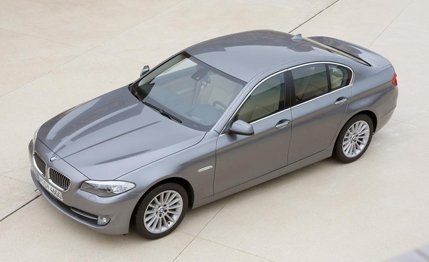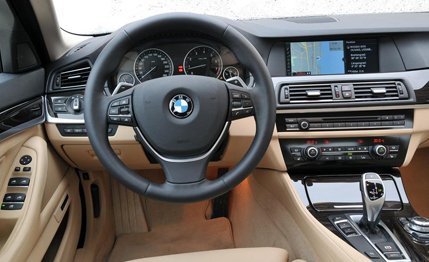
 Short Take Road Test
Short Take Road Test
We’ve sampled a bunch of configurations of BMW’s latest-generation 5-series since it debuted about a year ago, but they’ve all been rear-drivers. Last fall, BMW launched the all-wheel-drive 535i xDrive, fitted with the most recent iteration of the company’s all-wheel-drive system. With the trailing edge of the Midwestern winter dropping the season’s last snow on us, we buckled up our test gear and set out to see how this all-weather sleigh stacks up against its predecessor and its current rear-drive siblings.
It Runs in the Family
Be it the V-8–powered 550i automatic or manual, the 535i automatic or manual, or the entry-level 528i, all members of the 5-series family are generally swift, cushy cruisers, with a competent chassis that connects all the dots, with one exception: the numb and artificially heavy power steering, which differs from rear-drive cars' in that it's hydraulically boosted. (Excepting the M5, non-xDrive 5-series models have electric systems.) Like the flimsy seats in the Corvette, this is something we’ll continue to rant about in the 5er until it’s fixed. It is that bad, and the xDrive 5’s steering is little better despite it being assisted by a pump and not a motor.


But as mentioned, the remainder of the 5 package isn’t bad at all. The exterior is handsome, and the interior is equally noble. The chassis delivers a smooth ride while keeping the body flat in corners.
This test car demonstrates what a vast improvement the new generation of BMW’s xDrive hardware represents over the last. The new version employs similar hardware to last year’s, but the car now sends more torque to the rear wheels during cornering and has adopted a much-faster-acting computer system. Like the old system, the 2011 535i xDrive’s has a default front-to-rear torque split of 40/60 percent. During cornering, the old all-wheel-drive 535xi maintained that split, but the new system moves to a 20/80-percent split to counter the understeer that plagued the old all-wheel-drive 5. Also aiding the 5’s ability to rotate fluidly is a torque-vectoring system that applies the brake to the inside rear wheel while feeding a bit more power to the rear end—and therefore to the unbraked outside wheel—to compensate for the drag. Together with the quicker computer, these two features make for a very agile sedan. It’s just a shame you can’t feel the road through the steering wheel.


Weight Watchers
Before hitting the test track, the 535i xDrive hit the scales, where it weighed in at a hefty 4272 pounds. That’s about 180 more pounds than the current rear-drive 535i weighs and 230 up on the last all-wheel-drive 5er. The current rear-drive 535i hits 60 mph in a healthy 5.4 seconds and reaches the quarter-mile in 14 flat. With the same engine and transmission but twice the number of driven wheels, we expected the 535i xDrive to launch a little harder than its rear-drive sibling, but the car’s weight played spoiler. The 0-to-60 run slowed 0.3 second to 5.7 seconds, and the quarter stretched to 14.1. Perhaps weight wasn’t the only thing hindering performance, though. This car’s transmission was uncharacteristically clumsy, its slow, rough shifts something we’ve not experienced before with the normally silky-smooth ZF eight-speed. Regardless, a 5.7-second run to 60 is still impressive performance from such a big car.
Loaded with more than $14,000 in options above and beyond its $53,275 base price, the 535i xDrive sampled here wasn’t cheap. We’d be inclined to keep the $2200 Sport package—it includes 18-inch wheels, BMW’s spectacular multicontour seats, and a leather-wrapped steering wheel—and little else. Then again, although this xDrive system is an improvement over the old, the 5-series’ steering deficiencies point us toward the Audi A6, whether we need all-wheel drive or not.